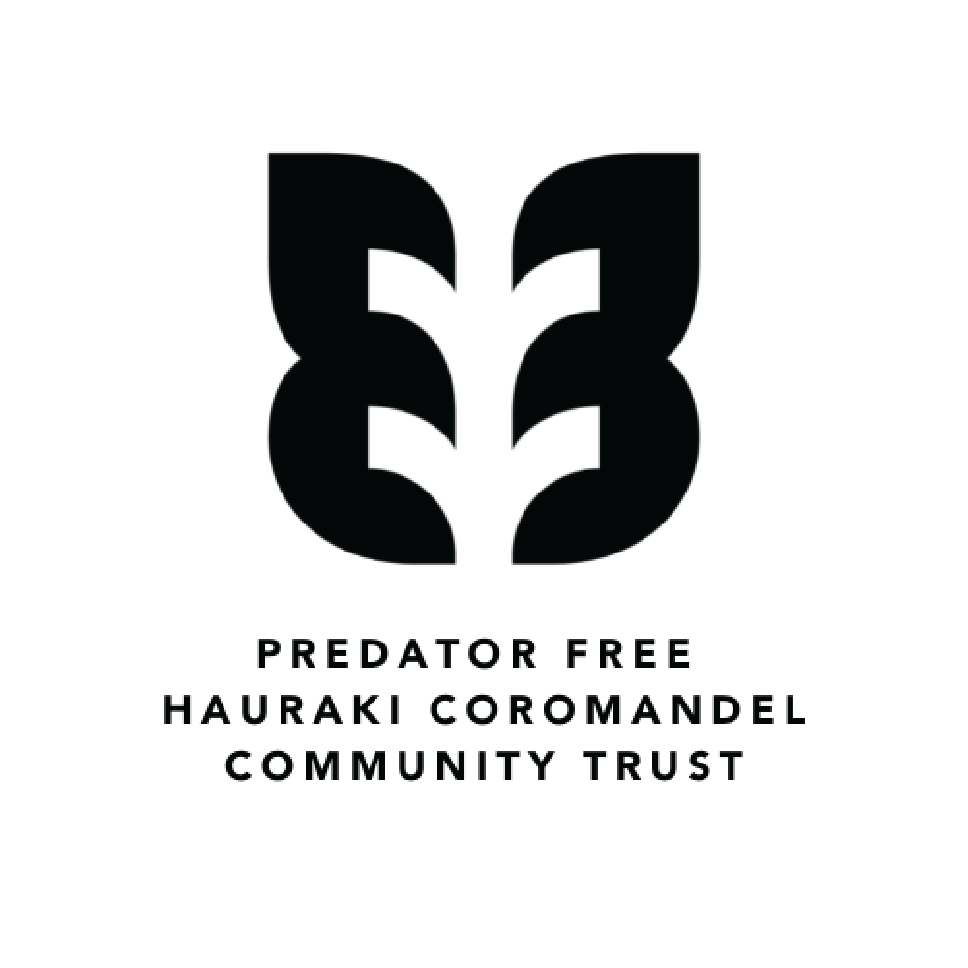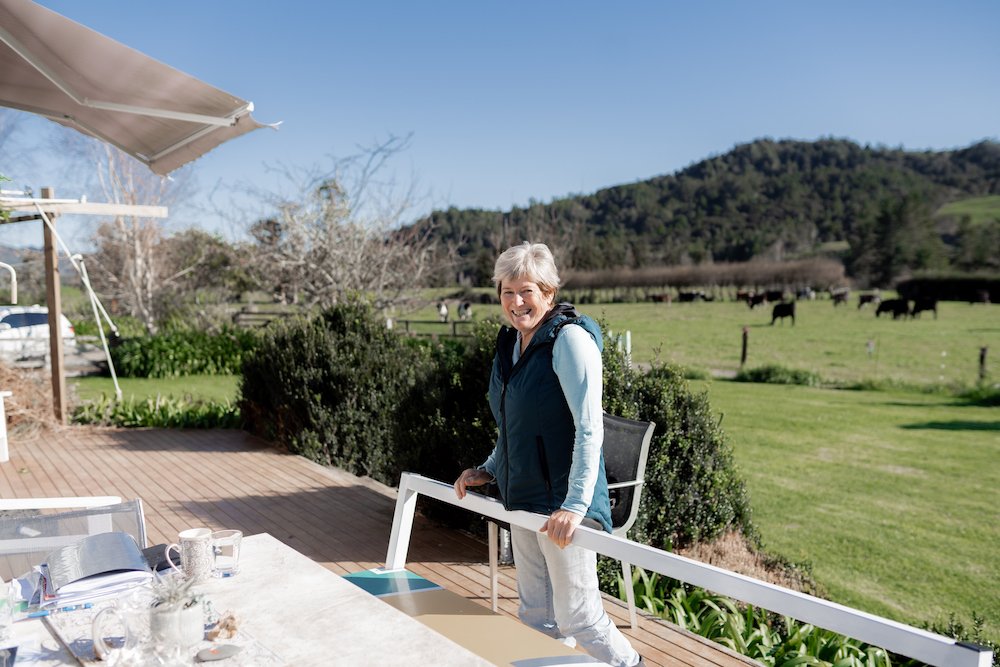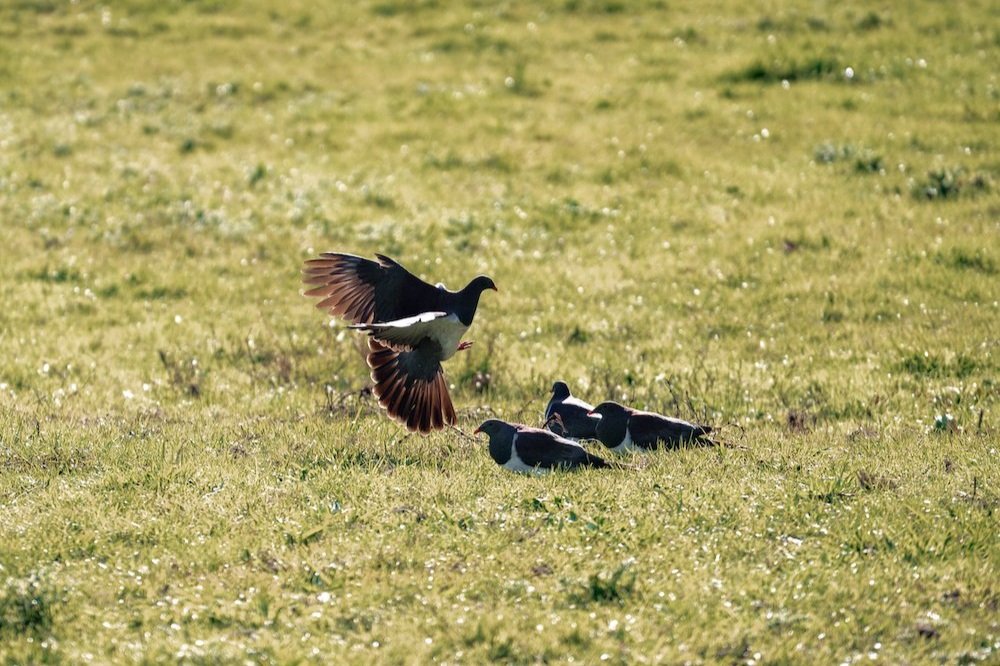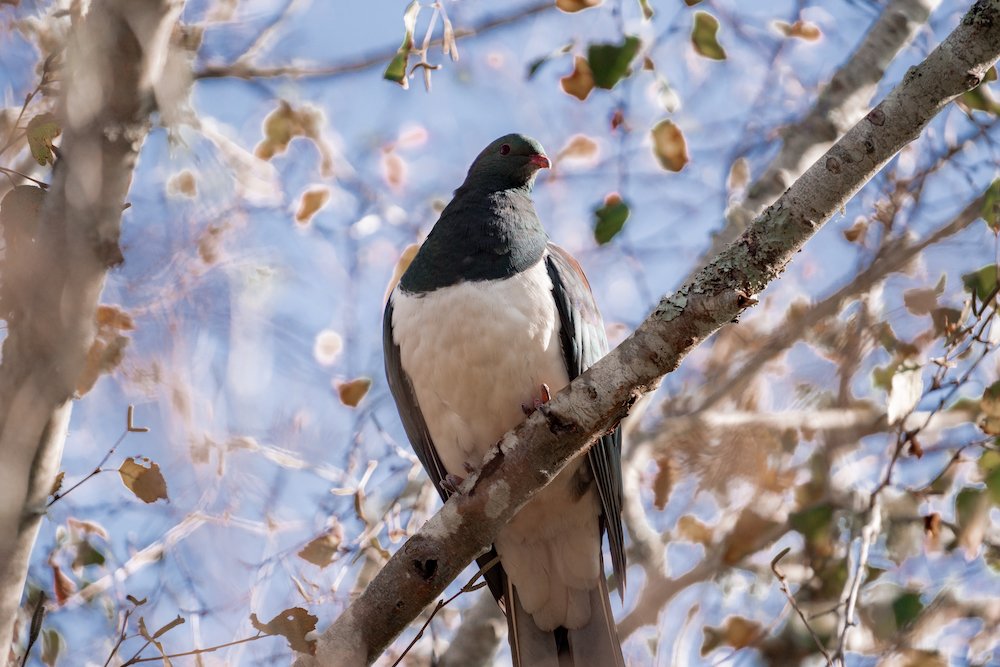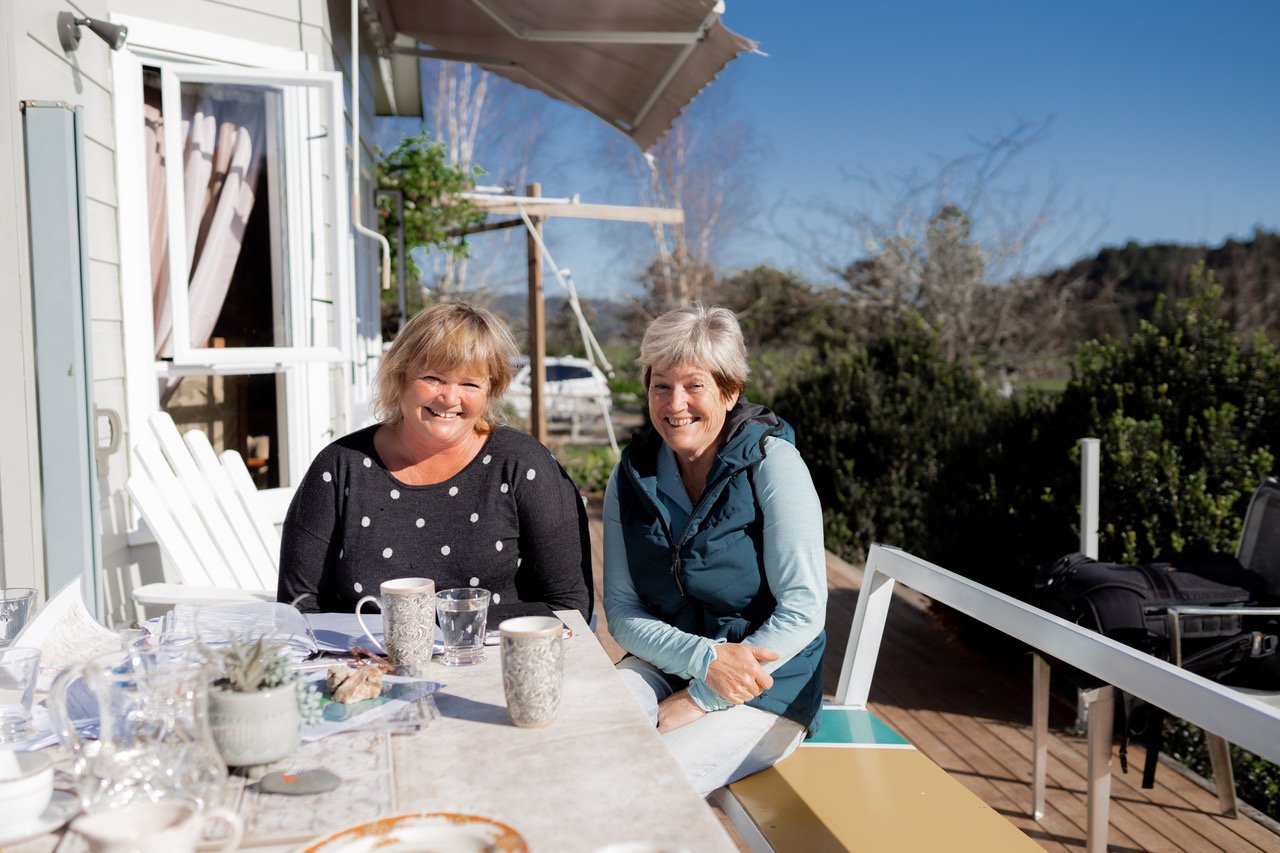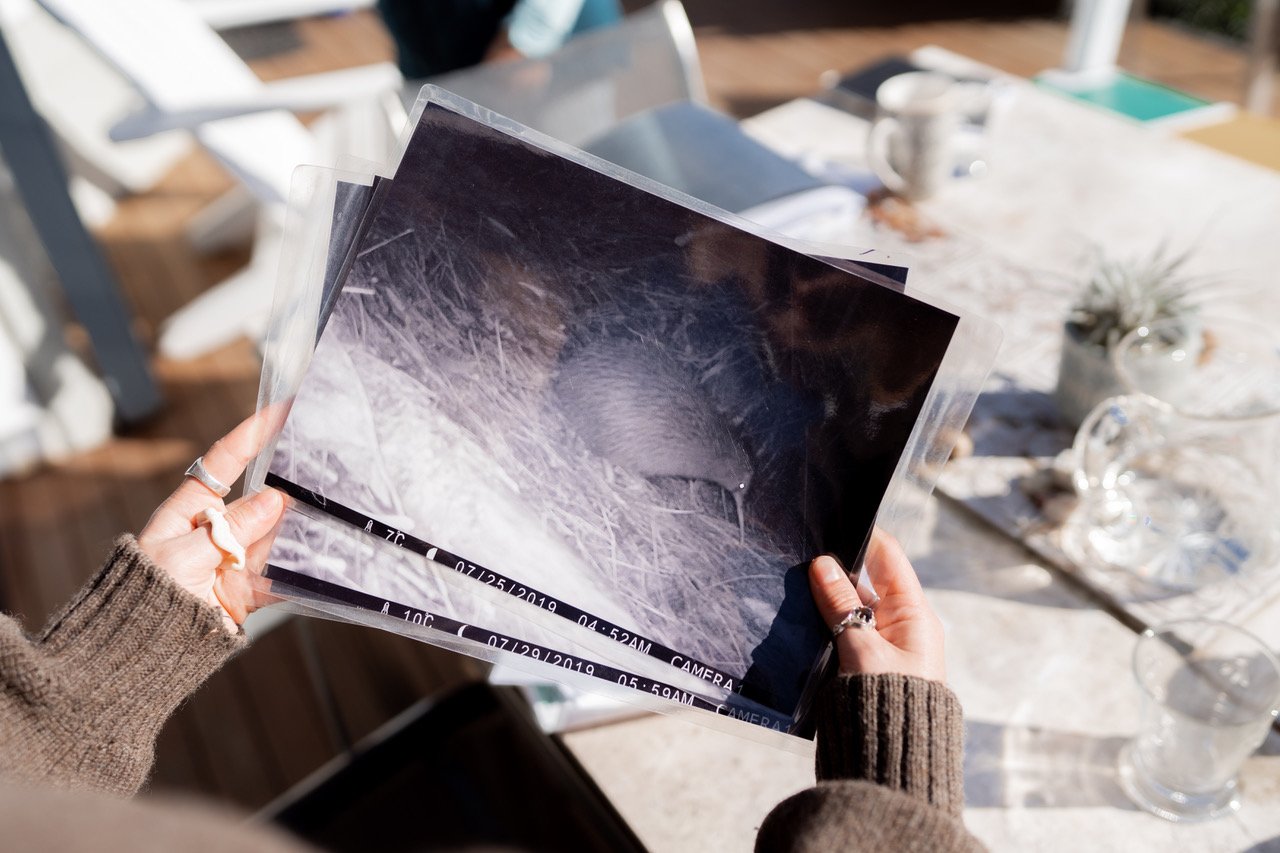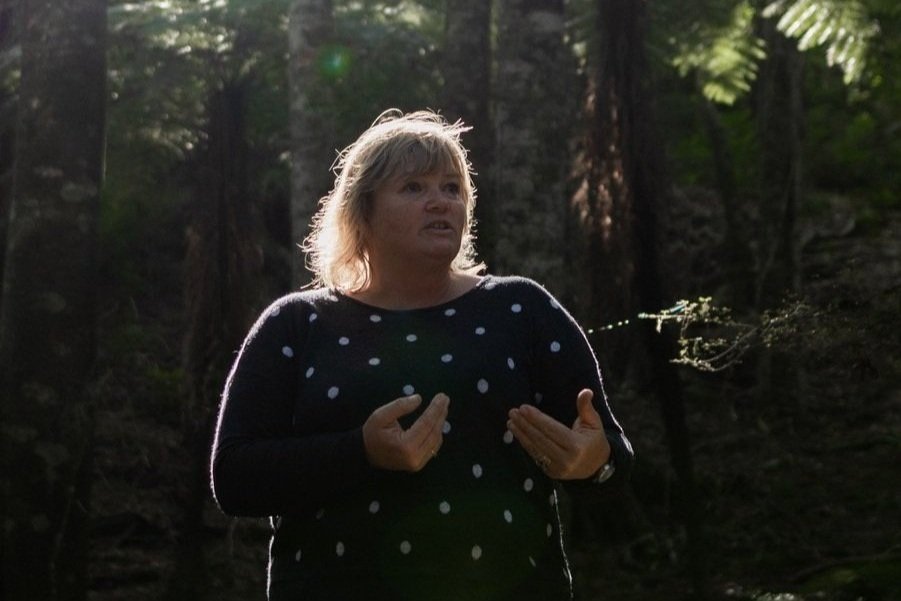Where the kererū play
Anyone who loves the Coromandel knows that the best places lie at the end of the windiest gravel roads with their requisite one-way bridges and potholes. Down one of these pathways to paradise lies the Hinds Farm where Janice Hinds, volunteer trapper and Kate Small, trustee, welcome us into the heartland of the Whenuakite Kiwi Care Group (WKCG).
It’s a beautiful spot, postcard perfect with undulating green hills, the more distant ones cloaked in native bush. Just beyond them, hidden from view, lies the Pacific Ocean. The farm sits on the slopes of a now-extinct volcano, and the richness of the volcanic soil is still visible despite the recent drought. The farm has been in Janice’s family since the 1930s when her grandfather purchased it.
It’s a beautiful spot, postcard perfect with undulating green hills, the more distant ones cloaked in native bush. Just beyond them, hidden from view, lies the Pacific Ocean. The farm sits on the slopes of a now-extinct volcano, and the richness of the volcanic soil is still visible despite the recent drought. The farm has been in Janice’s family since the 1930s when her grandfather purchased it.
Janice can trace the origins of the WKCG to a report by Sid Marsh which first kindled the local desire to save the national icon. Between 1992–3 Sid Marsh, under contract to the Department of Conservation, surveyed kiwi from Moehau to Whangamatā, and Whenuakite was identified as a kiwi hotspot during this survey. As kiwi numbers continued to decline through the end of the 1990s, DOC rallied for local support. With the help of Fin Buchanan, the Whenuakite Kiwi Care Group was formed. Janice’s father Arthur Hinds was an early member of the group and a huge believer in what they were doing. His legend lives on in Janice’s kids who are all third-generation trappers: “Georgia was 8 when she cut her first line with dad”. Commitment to the cause has remained strong in the area, with the group now comprising of 10 committee members, 50 volunteers and 1 paid coordinator/trapper.
There is a very visible difference that the work of the group has made that is apparent upon arrival at Janice’s house. An impossibly large flock of kererū are sunning themselves in a field next to the farmhouse, seemingly completely at home. Most people would thrill to see two or three kererū in a tree, so to see 40 or 50 of them in one field is spectacular. According to Janice, the flock can grow up to several hundred birds in size, and flocks of up to 15 kaka also at times choose this favoured stop-over spot. It’s a beautiful quantification of the work done by the group. As with all groups dealing with predator control, counting the native birds flocking back to a place is a far better measure of progress than counting the numbers of dead pests. According to Janice there were always five or six kererū around when she was a kid, and by 2008 that number was closer to 20. By 2017 the numbers had so exploded that Janice says it became difficult to keep track, “it’s hard to count once you get past 250!”. Kate Small, a trustee of the group who has been a member for 15 years, says they soon realised “the protection we were providing kiwi means that all these other birds are protected as well” and it’s hard to argue with this once you’ve seen a flock this size.
The spectacle of the birds is also reassurance that their approach is working. To complement the year-round trapping, every three to four years a carefully calibrated aerial 1080 drop is performed. Janice explains that as a large number of the rats in the bush never touch the ground, this is the only way to target a huge number of predators. It has also taken care of the possums – Janice can recall as a teenager her dad shooting possums in their hundreds, night after night. Now, the use of 1080 has controlled the possum problem, giving the native trees time to grow back to their former glory – in fact it’s now the kererū destroying the magnolia trees!
As well as providing a refuge for kaka and kererū, conditions have been made so good for kiwi in the WKCG rohe that the group now have a 13% annualised increase in kiwi numbers, going from 29 kiwi in 2001 to 133 pairs in 2020 (the group conduct an independent five-yearly kiwi survey). For optimal breeding conditions, kiwi require a bit of room to call their own in the bush, and the bush-clad hills that wrap around the edge of the kiwi zone are now thick with happy couples. Kiwi can be heard from many spots and Janice’s children have grown up thinking it’s normal to hear kiwi and see crowds of kaka and kererū year-round.
As with many conservation groups, succession planning is a concern for WKC, whose youngest committee member is 49. With typical no-fuss enthusiasm, Janice is planting seeds for the future though. A trapline near the middle of the kiwi care zone has been called the ‘Education line’ and groups of children from Whenuakite School come to visit it to learn about trapping and the importance of looking after where you live. Janice has also taken her show on the road to ECE centres to teach kids about kauri dieback. She takes scrubbing brushes with her so the kids can practice washing their shoes, though she has had to improvise when faced with the very Coromandel situation of barefoot children. Please note that a well-scrubbed foot is just as important as a scrubbed shoe for all you bare-footers out there in the bush!
Janice describes Kiwi Care as a “forever project” and one that runs in her blood: “this is my kids’ legacy, and mum and dad worked too hard for us to drop the ball.” The rest of the group feel similarly, as Kate explains “funding always asks for a finish date, but we always struggle to give one because this won’t ever finish!” Thanks to a four-year Waikato Regional Council Natural Heritage fund, funding is not currently an issue, but the work of predator control over the 3500ha of private and conservation land continues as ever. The group also recently funded their own kiwi aversion training for 26 dogs, and are keen to spread the message of the importance of this training to bach owners and tourists who may not realise just how easily any dog can kill a kiwi. The group’s successes have only spurred them to work harder, and the fruits of their labour are becoming more and more visible – or, in the case of the kiwi, audible!
Article by: Carolyn Wadey-Barron
Photography by: Savannah Walker, Take of You
If your community conservation group would like to share your story and be featured on our blog, please get in touch! If you are interested in volunteering in the Hauraki Coromandel head over to our Contribute page and read more.

